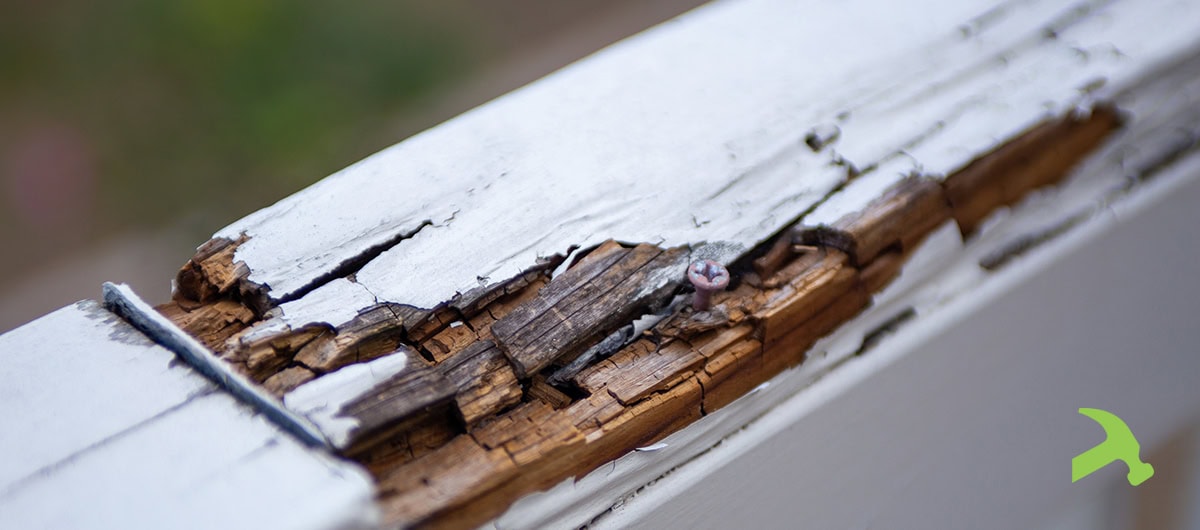
Dry Rot: The Silent Threat to Your Commercial Property’s Value & Safety
Dry rot is a hidden but significant threat to commercial and multifamily properties, especially in the moisture-prone Bay Area climate. Over years of maintaining properties across the region, we've seen how unchecked dry rot can quickly escalate from minor to major structural concerns.
As experienced commercial construction experts who've handled countless remediation projects, we understand how this seemingly small problem can impact tenant satisfaction, property value, and building safety.
Understanding Dry Rot
Think of dry rot as your building's silent saboteur. Despite its misleading name, dry rot is a fungus that thrives in damp wood, consuming the components that give timber its strength (cellulose and hemicellulose). You wouldn't ignore rust eating away at a steel beam—and dry rot should be treated with the same urgency.
Like rust destroys metal, dry rot spreads through hidden wood fibers, often becoming visible only when the damage is advanced. Just as a rusted beam or corroded bolt can fail under load, dry rot can cause a wooden beam, deck, or staircase to lose its ability to bear weight, leading to dangerous conditions.
Warning Signs of Dry Rot & Problem Areas
Every property manager's worst nightmare is discovering a major structural instability too late. Regular monitoring of your property can help identify potential issues before they become serious problems. Watch for:
Physical Indicators:
- Crumbling, shrinking, or brittle wood
- Soft of spongy wood when touched
- Discoloration (darkened wood or greyish appearance)
- Surface growth resembling cotton wool or orange fruiting bodies (mushroom-like)
Environmental Indicators:
- Musty or earthy odors, especially in enclosed or damp areas
Structural Warning Signs:
- Warped, sagging, or springy floors
- Bubbling or peeling paint/wallpaper near high-moisture areas
- Loose or unstable railings, staircases, or deck supports
These signs may appear subtle initially, making systematic monitoring crucial for early detection.
“Like cancer, dry rot doesn't go away on its own. Once detected in your building's structure, immediate professional intervention is crucial to prevent devastating and costly damage.”
Key Areas at Risk
Experience has taught us that dry rot often lurks in predictable places. In commercial properties, we focus especially on wooden structures and their components:
- Deck boards, support beams, and attachment points
- Wooden stair treads, risers, and stringers
- Balcony structures and railings
- Areas where wood meets concrete or masonry
- Window frames and door jambs exposed to weather
- Wooden structures near plumbing or past water intrusion
- Basement and mechanical spaces with high humidity
High-traffic areas like decks and stairways are constantly exposed to the elements, while interior structures can be compromised by hidden plumbing leaks or water intrusion. What might look like normal aging on the surface can mask serious deterioration underneath. Regular evaluation of these wooden components is crucial—not just where they attach to buildings but the entire structure. This is especially true for heavily used features like deck boards and stair treads, where water can get trapped and accelerate decay, as well as any wooden structures affected by interior moisture issues.
Our Professional Approach
As construction experts, we understand that commercial properties cannot afford lengthy business disruptions. When dry rot is discovered, swift and thorough action is essential. We carefully remove affected wood and replace it with properly treated materials, ensuring the structural integrity of your property while minimizing tenant disruption.
Most importantly, we look beyond the obvious damage. We help identify conditions that led to the problem so you can take preventive measures to protect your investment. With proper materials and preventive strategies, we help ensure your repairs stand the test of time.
Preventing Dry Rot in Multifamily Communities
Protecting your multifamily property from dry rot requires a comprehensive approach focused on moisture control and early detection. Your first line of defense is good ventilation in enclosed spaces and well-maintained drainage systems. Regular gutter maintenance and proper flashing around roof penetrations help direct water away from wooden structures.
Preventive maintenance is particularly crucial for exposed wooden elements. We recommend waterproofing decks, balconies, and other exposed structures and applying protective treatments to susceptible wood. These measures significantly extend the life of your property's wooden components.
Success also depends on regular monitoring. Schedule thorough inspections twice yearly and after severe weather events, paying special attention to areas with previous moisture issues. Additionally, educate your tenants about the importance of promptly reporting any leaks, unusual odors, or visible damage – they're often your best early warning system for potential problems.
The Real Costs of Dry Rot for Building Owners
Let's talk about what's really at stake. Dry rot isn't just about repairs – it's about the safety of your tenants and the security of your investment. When property owners wait too long to act, here's how the problems cascade:
- Safety Risks Come First:
- Compromised stairs, walkways, and balconies put tenants at risk
- Structural failures can lead to serious injuries
- Trust, once broken by safety concerns, is hard to rebuild
- Emergency vs. Prevention:
- Minor, early-stage repairs are manageable
- Emergency structural replacements can cost 3-4 times more
- Unplanned repairs disrupt tenant lives and routines
- Property Value Impact:
- Dry rot findings during inspections can derail sales
- History of deferred maintenance reduces property value
- Reputation for poor maintenance follows a property
- Legal & Financial Exposure:
- California Senate Bill 721 mandates regular inspections of exterior elevated elements in multi-unit buildings and applies to buildings with three or more units
- Liability for injuries from structural failures
- Insurance complications and increased premiums
- Code violations and resulting fines
Here's the good news: Proactive maintenance builds trust with your tenants while protecting your investment. Regular inspections, now required by California law for multi-unit buildings, help catch problems early. When residents see management actively monitoring and quickly addressing potential issues, they feel secure in their homes. That peace of mind is priceless for them and smart business for you.
Professional Expertise When You Need It
Protecting the value and safety of your commercial property requires strategic thinking and timely action. Don't let dry rot compromise your investment. Contact Rockaway Construction today at (650) 738-9920 for a quote, or visit our contact page to schedule a professional evaluation. With 25 years of commercial construction experience, our expert craftsmen will ensure your building remains safe, sound, and profitable for years to come!
Sheena Fitzpatrick Principal, Rockaway Construction
Sheena and the Rockaway Construction team specialize in building, renovating, and maintaining commercial, residential, and multifamily properties throughout the Bay Area. With years of experience in construction and project management, she’s passionate about helping property owners and managers keep their buildings safe, modern, and marketable.
She knows that great construction isn’t just about the work—it’s about delivering on promises, solving problems before they escalate, and making life easier for her clients.
You can find Sheena on LinkedIn and right here on the blog, where she shares insights on construction, maintenance, and smart property management.
